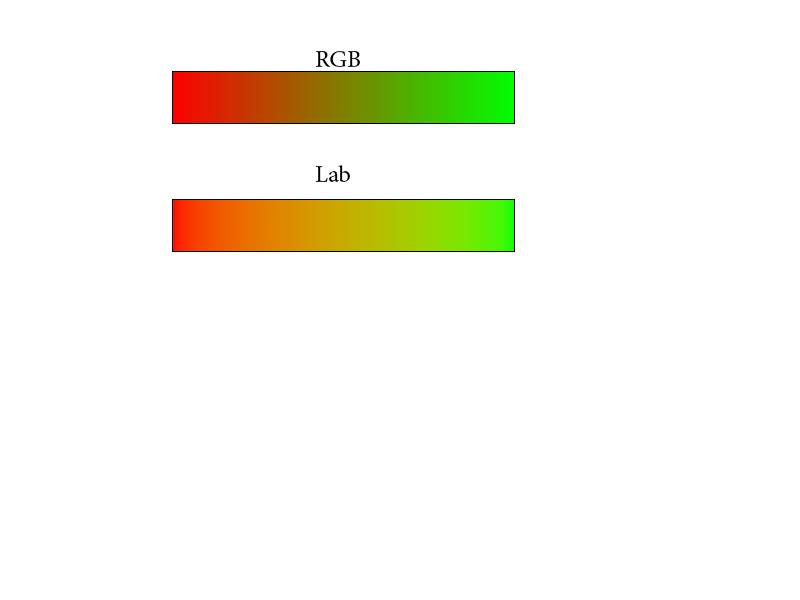On Fri, Sep 27, 2013 at 11:37 PM, Alan Gresley <alan@css-class.com> wrote:
> On 25/09/2013 9:23 PM, Chris Lilley wrote:
>
>> Hello Tab,
>>
>> Wednesday, September 25, 2013, 12:25:28 AM, you wrote:
>>
>> On Tue, Sep 24, 2013 at 3:14 PM, Rik Cabanier <cabanier@gmail.com>
>>> wrote:
>>>
>>>> On Tue, Sep 24, 2013 at 2:58 PM, Tab Atkins Jr. <jackalmage@gmail.com>
>>>>
>>>>> I doubt that this "just use the channels" approach is compatible with
>>>>> some other color spaces, like Lab, though.
>>>>>
>>>>
>>>> It is compatible. You can try it in PhotoShop :-)
>>>>
>>>
>> It is compatible because it is an additive colour space.
>>
>> How does that work, though? I mean, HSL doesn't work in a "just use
>>> the channels" approach,
>>>
>>
>> HSL isn't an additive colour space; its syntactic sugar for RGB and
>> thus you composite the RGB values.
>>
>> which is why the HSL blend modes are
>>> non-separable. Why would Lab work?
>>>
>>
>> Because Lab is an additive colourspace with orthogonal channels.
>>
>
> Can you point me to a display device that shows Lab or is this just
> theoretical?
>
I'm unsure what you're asking for.
Lab is supposed to be the colorspace of you eyes unless you're colorblind
(sorry Tab!)
So, if you draw and interpolate in Lab and display it on a display that can
cover that Gamut, you will get the ideal result. See attached for a
gradient in RGB versus Lab. Lab looks much nicer.
>
> FYI, you can display segments of cyan and fuchsia (magenta) and convert it
> to segments of white and blue so in theory, some subtractive color can be
> manipulated to mimic parts of additive colorspace.
>
>
>
> Alan
>
>
> --
> Alan Gresley
> http://css-3d.org/
> http://css-class.com/
>
